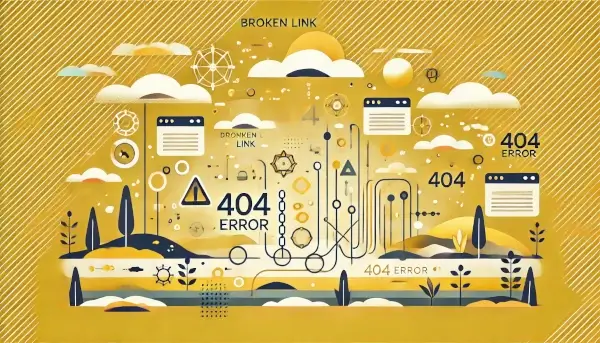
Search engine optimization (SEO) is the art of bringing your site higher in search engine result pages (SERPs) to increase its discoverability and competitive advantage. It involves detecting keywords that your target audience uses, publishing well-optimized content that's easy to crawl and rank for search engines and valuable to users, posting expert content on trusted sources to build credibility, and so on.
Yet, technical SEO is much different.
Unlike on-page and off-page optimization, which brings more "visible" results (such as a piece of new copy), the results of technical optimization are typically left behind the curtains. It's a much deeper work targeted toward improving the technical side of your site. Still, it's no less crucial for the overall result, and it typically requires ongoing webpage monitoring and commitment.
Technical SEO: Definition, Basics, and SEO Software Role

Technical SEO is the process of optimizing your site's architecture and performance to match the requirements of search engine algorithms and growing user expectations as well. Though the ultimate goal of the process is to boost your SERP rankings, this process also plays a substantial role in ensuring optimal user experience and satisfaction.
So what's in it? The basics of technical optimization include:
- Site structure refinement
- Mobile optimization
- Domain format improvement
- Broken link detection
- URL structure optimization
- Site speed improvement
- Uptime monitoring and improvement
- 404 error detection, etc.
Since this subsection of optimization deals with more complex, code-level improvement of your website, needless to say, it can take quite a lot of time and effort, especially given that it's not a one-off activity. Hence, leveraging specialized search engine optimization tools to automate all these tedious processes is crucial for optimal workflow and results.
Luckily, finding the right SEO software isn't tricky today. There are many options for different SEO tasks, including technical SEO audit, site speed testing, website health check, and more. If you're having difficulty finding the tools you need, there are also unbiased platforms that provide in-depth comparisons of your options, such as Top10seosoftware.com.
Webpage Monitoring and Its Role in SEO

As you already know, technical SEO is never a one-time effort but an ongoing commitment. Since search engines' standards and requirements are updating frequently, it's crucial that you keep a hand on a pulse in terms of your site's mobile friendliness, speed, accessibility, and other performance indicators. And that's where website performance monitoring steps in.
In a nutshell, webpage monitoring is the process of testing your site to ensure that it performs as expected and that end-users can access and interact with it seamlessly. It involves accessibility, functionality, uptime, performance, and overall website health check. In the context of technical SEO, this process is empirical as it helps detect technical SEO issues and alerts you about them to let you address performance problems early.
The easiest way to handle this process is to leverage a trusted webpage monitoring service, which equips you with 24/7 fully remote monitoring at intervals of up to every minute, timely alerting about problems, and deep reporting on your site's performance. With such a powerful webpage monitoring tool at hand, you can ensure that your website remains up-to-date, secure, and compliant with SEO best practices at all times, which will positively affect your SERP rankings.
The benefits? In case you are wondering whether such continuous checks of your site performance metrics really make sense, here are the top reasons that justify the importance of frequent monitoring:
- Cybercrime protection
- Operations optimization
- Fast resolution of issues that hinder rankings
- Revenue loss prevention
Website Defacement and SEO: How Continuous Monitoring Helps Prevent Serious Reputational Damage

Defacement and its possible consequences must be mentioned when discussing the importance of website performance monitoring.
First things first, website defacement is a term that refers to a specific type of digital attack, which implies hackers breaking into your server and replacing the hosted site with a different one (changing the appearance of your pages) or with malware. Such unauthorized changes in your site's look and content can cause severe damage to your reputation and trustworthiness, leading to lower SERP rankings. Moreover, such reputation abuse acts can impact your users, exposing them to malicious or harmful content. This can cause lasting trust loss and dissatisfaction in your users.
Continuous monitoring is one of the most surefire ways to protect you from various cyber attacks, including defacement. High-quality, around-the-clock monitoring and alarming can help you learn about system vulnerabilities and attack attempts immediately and act on them quickly. With the right webpage monitoring tool or service, you can prevent reputational damage and revenue loss in the long run and keep your site ranking high by ensuring impeccable security.
Importance of Tracking Site Performance and Uptime
![]()
Various site performance metrics are at the heart of technical SEO. They help you understand your site's errors and make strategic improvements to ensure it's accessible and performs as expected for all users and at all times.
In the context of website performance monitoring, there are several metrics worth keeping your eye on:
- Speed. Slowly loading pages is annoying and damaging to brand reputation. They also affect your rankings by hindering user experience, enlarging bounce rate, and making your site underperforming.
- Error rate. This metric indicates the total percentage of request errors generated on your pages against the total number of requests. Growth in this rate signals some major technical issues that might affect performance and rankings.
- Mobile-friendliness. Accessibility and solid performance on mobile devices directly affect your rank in SERPs. Hence, monitoring your page's responsiveness for different devices is crucial.
- Bounce rate. This rate demonstrates the number of users who leave your site too soon. Though it's not directly linked to the technical performance of your site, it might signal specific issues that you need to address quickly to improve your SEO.
Another thing to look at is uptime. It means the amount of time that your site is "up," meaning it's available and accessible to users. It's an important signal of the reliability and trustworthiness of your site. Needless to say, it dramatically affects your user experience and visitor return rate because people clearly don't want to come back to a site that's systematically in downtime. User experience and the traffic you gain directly affect your rankings, making uptime another crucial factor for technical SEO success. A standard industry benchmark to strive for is the three-nines (99.9%) of uptime.
Broken Link and 404 Error Detection

A broken link is a link (either internal or external) that takes users to a non-existent or "dead" page. Since Google uses links as tools to find and understand your site and its content, we can say that they play a significant role in SEO. When they are broken, they may pose several challenges for you:
- Decreased site quality
- Crawl errors
- Wasted link authority
The 404 error is the most common error code when a user tries to access a page that wasn't found by a server because it's dead, moved, or non-existent. Broken links most often lead users to pages with this error.
Both broken link and 404 error detection and timely correction can help you significantly boost your site's overall quality and performance, thus boosting user experience and your rankings. Regular monitoring and wise website performance optimization can help you handle this task without a hassle. Your monitoring partner or tool can easily indicate broken links and 404 pages and instantly notify you about these problems.
The Role of Webpage Monitoring in SEO Compliance

As you now know, technical SEO might not do a lot of work that's easy to notice to the eye. Yet, it performs a vital job of ensuring that your site works well and that users actually enjoy engaging with it. This type of optimization is made of multiple elements, including speed, site architecture, navigation, links, security, mobile friendliness, and more. And everything you do on a technical level, whether improving loading time or fixing 404 errors - every action affects your overall SEO and SERP rankings.
Now, if you look deeper into the heart of technical optimization, you'll see that it always consists of three things:
- Testing and monitoring
- Issues detection
- Performance optimization and improvement
Given that it always begins with tracking and detecting issues, we can confidently state that webpage monitoring plays a significant role in making your site perform great. When leveraging website performance monitoring solutions, you can rest assured that you'll know about any changes or errors early and will have time to address them accordingly without damaging your reputation or losing revenue.
And what does this mean for SEO? Technical optimization is among the core SEO basics. Without it, you can't ensure search engine bots can access and crawl your pages appropriately. Respectively, you can't guarantee that you will be visible in SERPs. Hence, by implementing ongoing monitoring, you can also take your SEO to the next level. The closer you track your performance and the faster you solve potential issues - the better and more trustworthy you appear to users, the easier search engines can crawl your pages, and the higher you will appear in results!
Conclusion
From broken links to loading speed, various technical SEO issues can significantly affect the feel and impression users get from your site. Users feel frustrated and disappointed when your site loads slowly or doesn't adapt to different screen sizes and choose to leave. As a result, such issues can tremendously affect user experience and satisfaction, traffic, bounce rate, and, eventually, your SERP rankings.
Avoiding these problems takes frequent content monitoring, technical SEO audit, and overall tracking of the key performance metrics. All these activities are handily combined in the process called webpage monitoring. As you already know, with the right service provider, you can understand that your pages are at close look 24/7 and that you will be instantly notified about any issues that may affect your success.
Use this knowledge to take your SEO game to the next level and outshine the competition!


 Copyright 2000-2025, WebSitePulse. All rights reserved.
Copyright 2000-2025, WebSitePulse. All rights reserved.